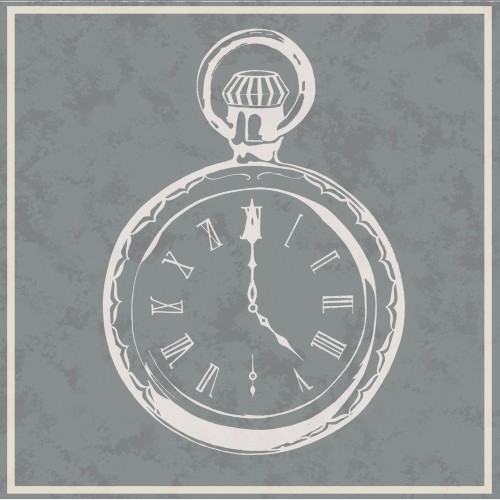 Release Date: February 15, 2011
Release Date: February 15, 2011





Since his 2001 debut, Haunt Me, Haunt Me Do It Again, Tim Hecker has consistently produced quality ambient albums broadening compositional paradigms, while still remaining fairly accessible. This holds true with his sixth album, Ravedeath, 1972.
Structurally, the album is comprised of Hecker’s usual mix of multi-part pieces and standalone tracks. Sonically, however, the music takes a turn into darker territory. Tracks are often haunting or disturbing.
It’s no surprise when one considers the basis of the material: samples of a live recording of a church pipe organ in Reykjavik, Iceland. Hecker’s permutation of the sound carries its aura, but there’s an underlying tranquility in spite of the gloom. And much like what Icelandic greats Sigur Rós did on ( ), he is able to take the cold, dark and heavy and create something downright gorgeous.
Opener “The Piano Drop,” likely alluding to the album art in which a group of students are dropping a piano off the roof of a building, suggests that this album is an antithesis to Fennesz’s warm, bright masterpiece Endless Summer. Distortion and glitches flood the sound space with a murky dissonance that wouldn’t be out of place on a witch house record, if Hecker ever dropped a beat. The occasional high and low jabs he throws in have great effect on the listener (especially on a nice pair of headphones).
Following that comes the three-part “In the Fog.” Easily one of the finest moments in his career, the piece showcases Hecker’s strengths at manipulating sound, while maintaining its organic qualities. Organ chords are distinguishable, but staying true to the title are veiled by a thick fog. The piece moves slowly, but the dynamics are huge. The mood shifts constantly with sounds suddenly entering or being cut out and swells of sound toppling over each other throughout its 16 minute duration, until it ends with a quiet hum.
Beneath darkness and distortion on the two-part “Hatred of Music” lies an absolutely gorgeous piano. It’s not playing anything in particular, but the listener will undoubtedly find solace in it when it appears just as the violent drones are about to devour them.
“Analog Paralysis, 1978” and “Studio Suicide, 1980” suggest a sequence of events along with the album title. These two tracks provide a period of respite from the rumbles and screeches leading into the finale “In the Air.” Its three parts provide a perfect summation of the album. Hecker teases with piano chopped just enough to leave a trace of melody, swirling distortion, little clicking sounds (perhaps from an old projector) and what sounds like faint voices support the equally faint notes of piano that bring the album to an end.
Hecker’s use of space on this record is to be commended. At times dense, at times sparse, there is never a sound misplaced. Quiet drones are used as deftly as background music in the best films. It is a credit to his craftsmanship.
No one knows what the title’s supposed to mean, not even Hecker, but it does lend a lot to the imagination. The music is no different. Certainly a sensory experience of IMAX proportions, Ravedeath, 1972 threatens to take the title of Hecker’s best work from 2006’s Harmony in Ultraviolet. This is not for the impatient, but those who can sit through 52 minutes of pure ambience will likely find many thrills, as it is simply an excellent record.
Tim Hecker – Ravedeath, 1972 tracklist
- “The Piano Drop”
- “In the Fog I”
- “In the Fog II”
- “In the Fog III”
- “No Drums”
- “Hatred of Music I”
- “Hatred of Music II”
- “Analog Paralysis, 1978”
- “Studio Suicide”
- “In the Air I”
- “In the Air II”
- “In the Air III”


